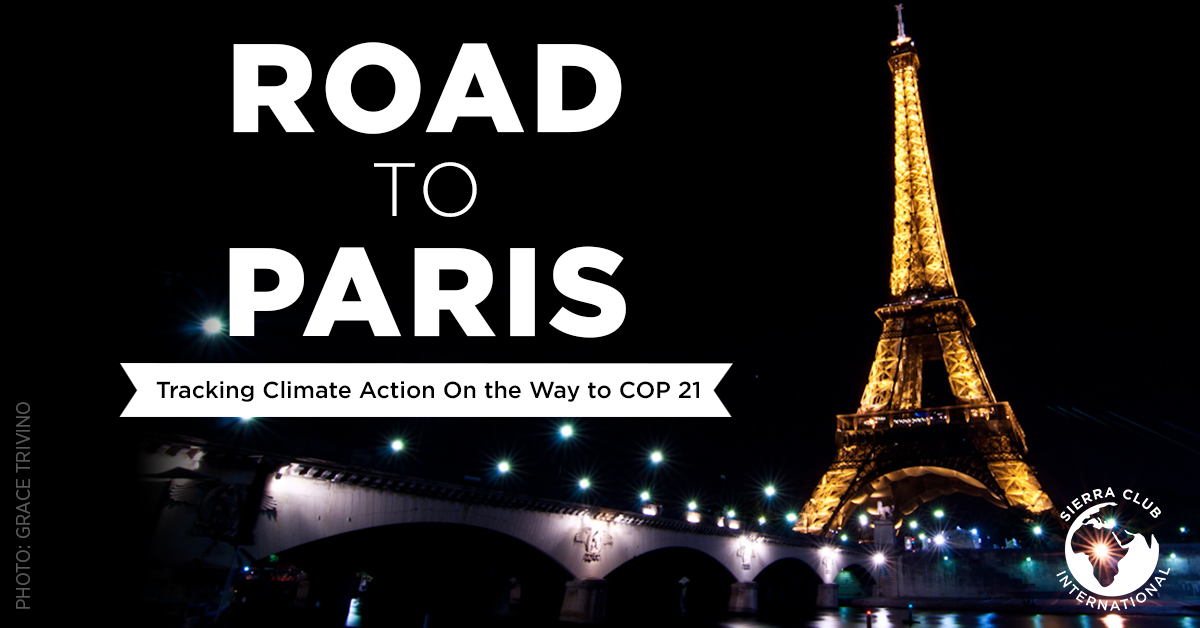In the lead up to the COP21 climate negotiations in Paris later this year, the United Nations Framework Convention on Climate Change (UNFCCC) was recently hosting its annual Ad Hoc Working Group on the Durban Platform for Enhanced Action (ADP) session in Bonn, Germany. This session, ADP 2.9, came six months prior to COP21 and presents the Parties -- the negotiating bodies for each country -- with a need to further develop and clarify the text that came out of the previous intersessional, ADP 2.8, in Geneva, Switzerland. This text will be used during the final 2015 climate negotiations in Paris, and will give us the 2015 Agreement.
Andy Katz was blogging from Bonn.
The anticipation is building for the international climate negotiations to result in a newfound resolve to fight climate disruption. While this process culminates with a major summit in Paris this December, the current so-called “intersessional” meetings in Bonn, Germany are crucial for negotiators to prepare language for the new legal agreement. As one of two Sierra Club leaders who participated as observers at this month’s session, this dispatch notes the progress that’s been made toward an agreement but also the long road ahead on the way to protecting the climate.
Aiming for greater ambition on climate action and more predictability on climate commitments than the 2009 Copenhagen Accord, 196 countries started with the clear elements of an agreement -- and nearly 100 pages of text compiled earlier this year in Geneva -- to narrow down into what is expected to be about a 15 page core agreement, followed by more explanatory declarations and decisions supporting its implementation.
Like recent agreements, this one is based on nationally-determined emission reduction targets – exactly how often and when these targets are increased to make up the “ambition gap” is a major negotiating issue, as is the inclusion of a long-term goal of moving to 100 percent clean energy to send a clear market signal to business sectors. The previously announced U.S. target of 26-28 percent below 2005 levels by 2025 is on the path to 80 percent emissions reductions by 2050. Consolidation of targets will help measure global commitments and the additional level of progress needed, since the current level of commitments could still trigger warming between 3 – 4 degrees Celsius.
Also of great importance was the inclusion of finance for developing countries requiring assistance to transition to sustainable development. Aspirational statements for developed country funding of this and other critical elements of a package like adaptation and technology transfer have yet to develop into specific commitments. President Obama’s proposal for initial funding of the Green Climate Fund is pending an uncertain fate in Congress.
Active sessions in Bonn stretched for over 12 hours daily, ranging from large negotiating groups sorting out language, smaller panels focused on issues like how to avoid double-counting efforts when reductions are measured across countries and sectors, and informal side events help process unresolved issues like what the legal form of the agreement may look like. State Department officials made time to meet with us and other environmental advocates in between a busy schedule of bilateral meetings with international negotiators – a slow but important process toward a complex agreement critical to the future of our planet.
The Sierra Club is preparing to send an urgent message from our local communities – to Washington and Paris alike– that the Earth can’t wait to protect our climate. Stay tuned for more on how Sierra Club’s Local to Global campaign will build on what’s achieved in Paris with stronger action from the bottom up.
